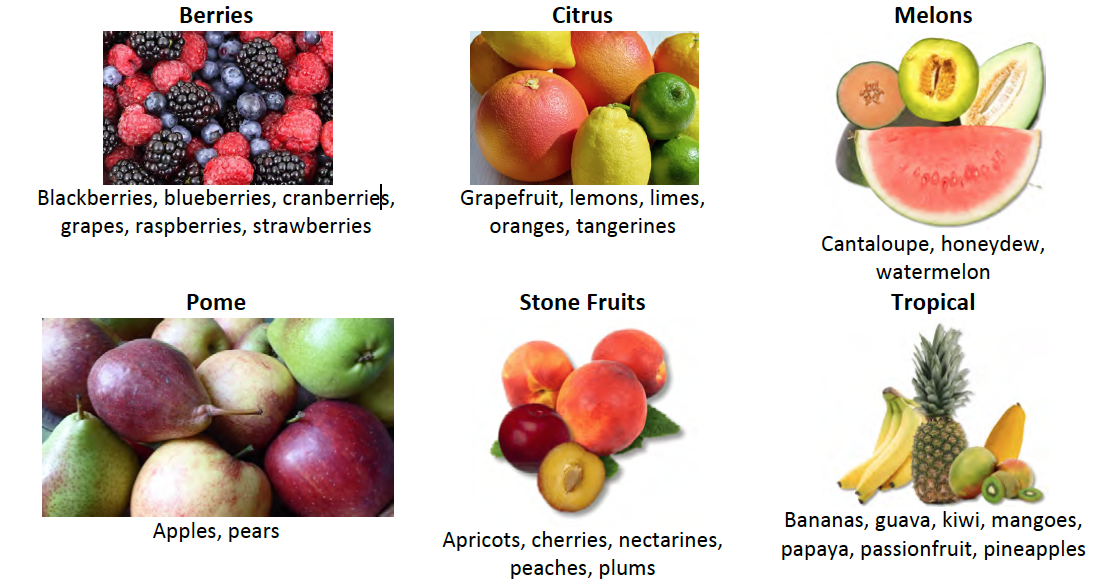About Fruits
Fruits are the matured ovaries of flowers that contain the reproductive seeds of the plant. Although we customarily think of the sweet varieties comprised of berries, citrus, melons, pomes (apples and pears), stone fruits (cherries and peaches), and tropical fruits (bananas and pineapples), fruits also include tomatoes, cucumbers, and peppers. Fruits are served fresh, cooked, dried, candied, or juiced.
Seasonal Availability
Fruits are best when eaten in season. Fruits are usually picked before ripe and need to soften and develop their full flavor. Citrus, berries, grapes, cherries, melons, pineapples, and plums don’t develop much flavor after they are harvested. Others, including apricots, avocados, bananas, mangos, pears, peaches, and tomatoes, continue to develop by emitting ethylene gasses that ripen them. To speed ripening, store them in a warm place enclosed in paper (not plastic) to concentrate the gasses.
Purchasing and Storing
Use fresh fruit within three days. Refrigerate berries at 38-42°F/ 3°-6°C, but store unripe melons and avocados at room temperature until ripe. And refrigerate for up to three days after ripe. Refrigerating bananas causes black spots and inhibits sweetening. Store tropical fruits at slightly higher refrigerated temperatures (50°F/10°C).
Processing
Bananas, apples, pears, and avocados are susceptible to enzymatic browning, which can be minimized by acidulation (lemon, vinegar) or cooking.
Cooking Fruits
Fruits are used to prepare sauces, jams, jellies, and compotes and are also roasted, grilled, broiled, or poached as a side dish or dessert. Sugar is often added to fruits cooked in liquid as a way to firm the fruit and maintain its shape. Fruits can also be prepared as chips by dipping them in a simple syrup and cooking in a low oven, or they can be dehydrated without sugar.

